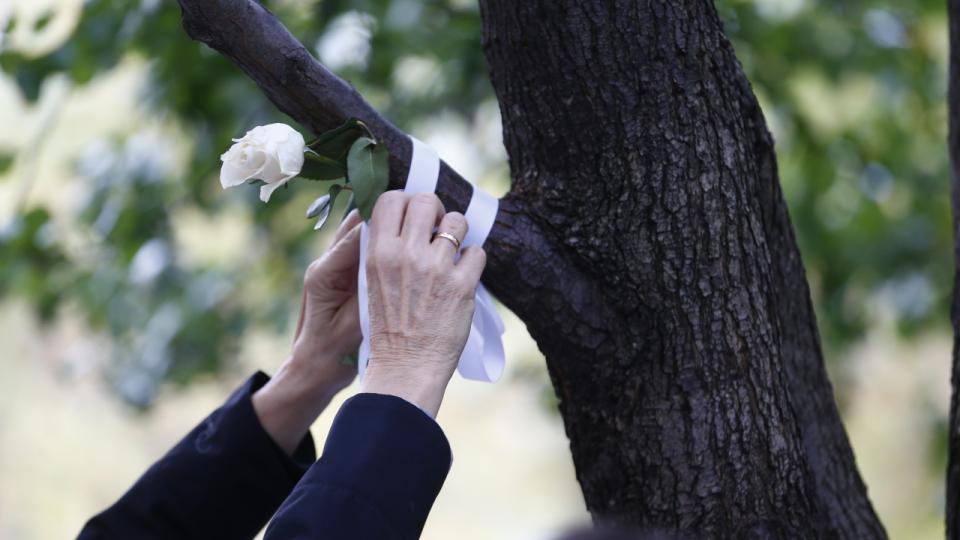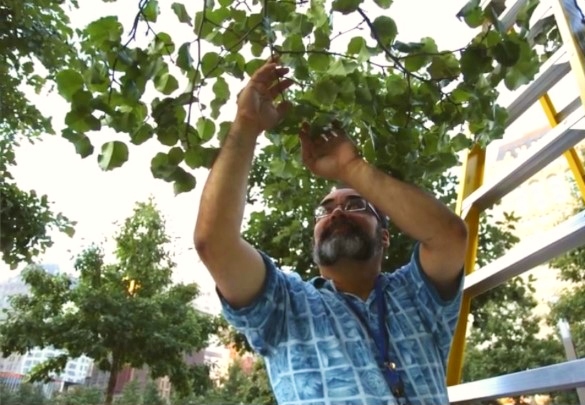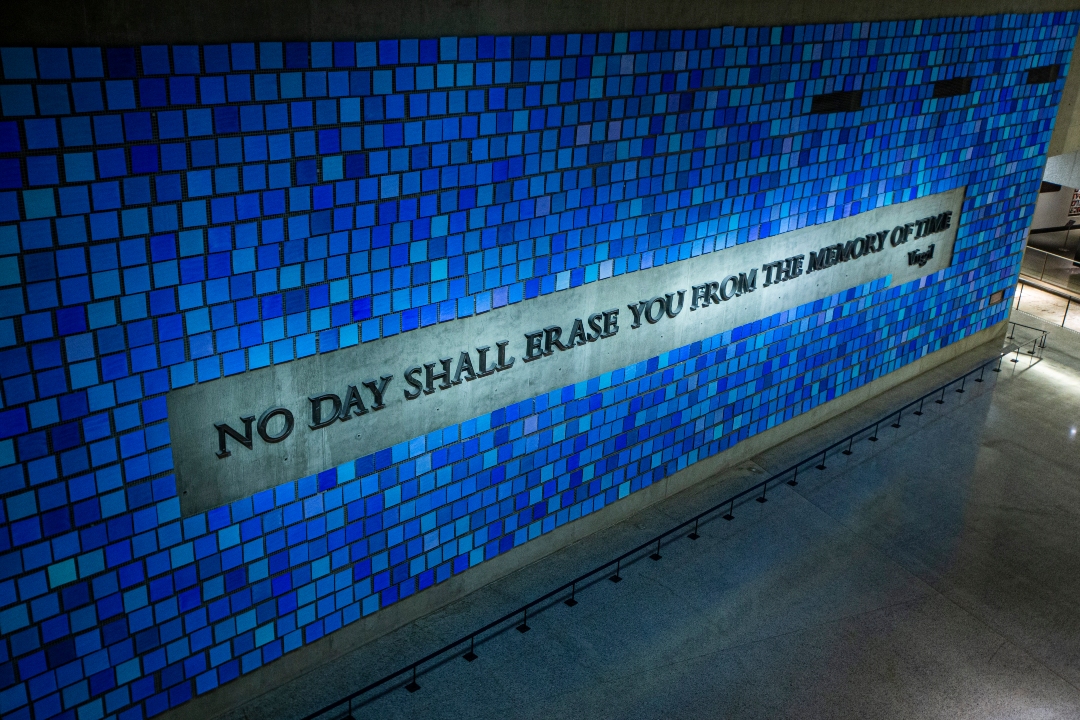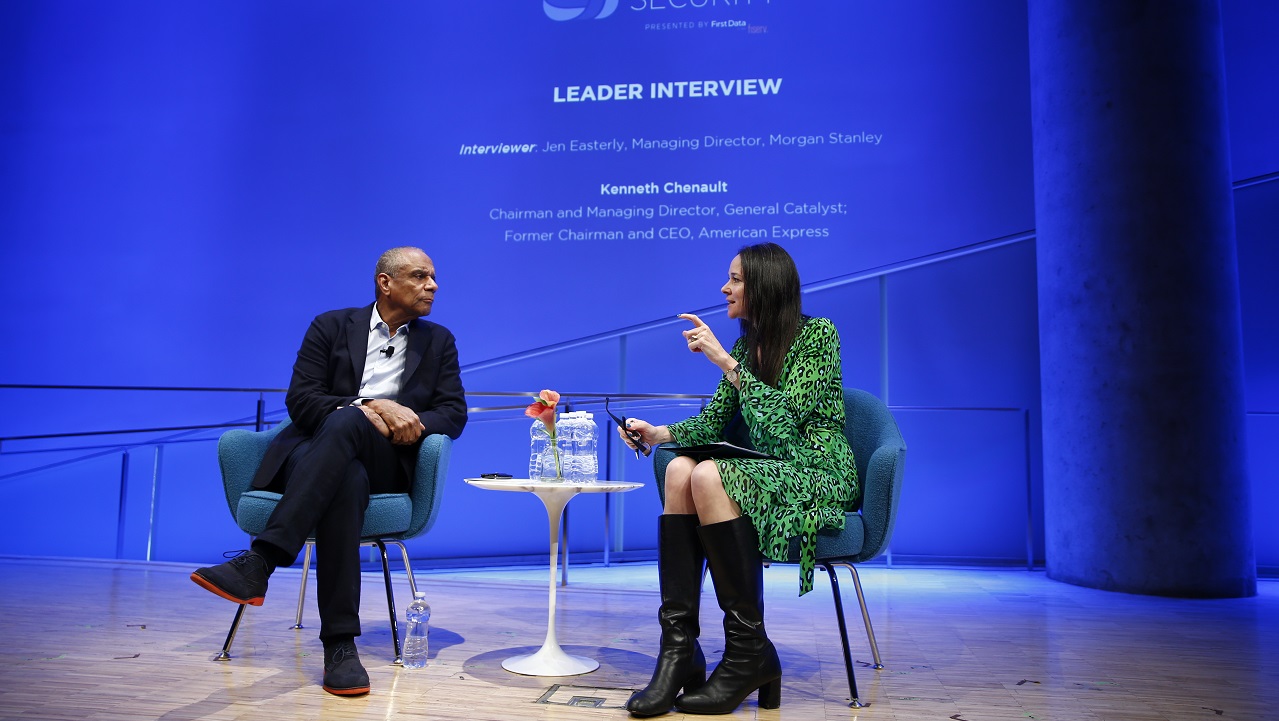Make a donation to the museum
Stories of Hope: The Survivor Tree
Stories of Hope: The Survivor Tree

Following the 9/11 attacks, Ronaldo Vega worked alongside his NYC Department of Design and Construction (DDC) colleagues at Ground Zero, helping to clear debris from the site. While working long and difficult shifts in the weeks after 9/11, Vega and a few fellow recovery workers witnessed an inspiring testament to resilience.
“On a lonely October night in 2001," Vega recalls, "my fellow recovery worker Becky Clough found a tree buried in the rubble, burned, torn, splintered, lying on its side almost dead.”
Inspired by the tree’s faint signs of life, Vega, Clough and others facilitated the transportation of the Callery pear tree to the Arthur Ross Nursery in the Bronx. In 2007, Vega joined the National September 11 Memorial as the Senior Director of Design. In the fall of 2007, he remembered the tree that had been transported from Ground Zero and wondered, “'What had become of that tree? Did it make it?’ I had to find out.”

He journeyed to the Bronx where the tree remained at the nursery. “As soon as I found her, in a corner by the entrance, I fell in love with her,” Vega says in a recollection for Stories of Hope on Instagram. “The scars from 9/11 still clearly visible on her, she was none the less stunning, vigorous and thriving. Although I did not know how I would do it, I decided right then and there that I would find a way to bring her back to the Memorial Plaza.”
The tree, now known as the Survivor Tree, faced many obstacles in returning to its home at the World Trade Center site. After years of care at the nursery, a Nor’easter in March 2010 threatened the Survivor’s Tree health, completely uprooting it. Vega and several others from the Memorial team and Bartlett Tree Experts set the tree upright again and tried to mitigate the damage. Then, all they could do was wait to see whether the tree would bloom in April, indicating a full recovery.
Vega, recalling the anxiety they all felt at the time, says, “We waited and prayed. And then, it happened. She was completely enveloped in beautiful white blossoms. She had come back bigger and stronger than ever.”
In December 2010, the Survivor Tree was replanted on the Memorial plaza. The following year, the Memorial opened on the tenth anniversary of the attacks. Since then millions of visitors have seen the tree through the seasons as its leaves change, fall and give way to white blossoms in the spring.
For Vega, the Survivor Tree is a constant source of inspiration. He encourages anyone who is feeling lonely or lost to look to the hopeful story of the Survivor Tree as evidence of our own ability to withstand tragedy and difficult circumstances. Having battled COVID-19 as a result of pre-existing 9/11 health conditions, Vega finds strength in the story of the tree that now serves as a symbol of hope, faith and resilience, or as he remarks, “A true New Yorker."
Previous Post
Upcoming Public Program: "Are We Safer?"

We are pleased to present the next program in our When the World Changes digital conversation series at 2 p.m. ET on Monday, November 9.
Next Post
Register Today for the Third Annual Summit on Security

The Summit will take place virtually on November 9 and 10.